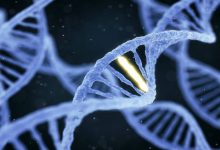New Study Reveals Junk DNA is Not Selfish

A new study done by researchers of the University of Michigan Life sciences Institute & Howard Hughes Medical Institute revealed the important role of junk DNA in holding the genome together.
Junk DNA is the non-coding DNA sequences which do not code for any protein. This finding showed that this junk DNA which is also known as satellite DNA have a crucial role in ensuring that chromosomes are bundled appropriately inside the nucleus. If not, cells cannot survive.
The pericentromeric satellite DNA is made up of a highly repetitive sequence of genetic code and does not contain any instruction to make a particular protein, despite the fact that it forms a significant part of our genome. The repetitive nature of junk DNA makes the genome less stable and vulnerable to damage and disease. In previous studies, scientist believed that junk DNA so-called “selfish” DNA do not have an important role.
“But we were not quite convinced by the idea that this is just genomic junk,” said Yukiko Yamashita, the research professor at the LSI and lead author on the study. “If we don’t actively need it, and if not having it would give us an advantage, then evolution probably would have gotten rid of it. But that hasn’t happened.”
During their research, scientists were very curious to know how a cell will behave in the absence of junk DNA and what effect it will have on cell’s functionality. They faced difficulty in deleting or mutating the pericentromeric satellite DNA as it is present as long repetitive sequences. So they found another way to inactive it by removing a protein called D1 which binds to satellite DNA.
In the laboratory, they used commonly used model i.e. Drosophila melanogaster (fruit flies) and removed D1 protein from their cell. They found that the germ cell whose fate is to develop into sperm or eggs were dying. On further study, they noticed that outside nucleus, micronuclei were being formed which also included pieces of the genome. Hence the cells could not survive as the entire genome was not completely encapsulated in the nucleus.
“It’s like forming a bouquet,” said Yamashita, who is also a professor of cell and developmental biology at the U-M Medical School and an HHMI investigator. “The protein has multiple binding sites, so it can bind onto multiple chromosomes and package them together in one place, preventing individual chromosomes from floating out of the nucleus.”
To confirm their study, the team conducted similar experiments in mouse cells and the results were same. The cell formed micronuclei in a mouse like they did in fruit fly on removing the D1 protein and ultimately cells become dead. In the light of this study, the researchers believe that satellite DNA is crucial for cellular survival, not just in model organisms, but across species that embed DNA into the nucleus–including humans.






